Going from strength to strength at Jekko
15 December 2023
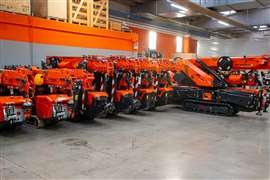 Completed cranes out for delivery at the Jekko factory north of Venice in Italy. Photo: Jekko
Completed cranes out for delivery at the Jekko factory north of Venice in Italy. Photo: Jekko
Already by November 2023, for the fifth time in a row, Italian crane maker Jekko achieved year-on-year growth. It is described by the company as a positive trend of exponential growth driven by the operations division.
Long term planning and the evolution of the operations division is “the real engine of this relentless growth,” Mauro Tonon, Jekko operations director, told ICST. And that growth is impressive. Turnover increased from €20.5 million in 2019 to €31 million in 2021 and €57 million in 2023.
In terms of numbers of cranes built and sold, the total for 2023 will be around 600 units, an increase of 20 % over the 500 units of 2022 and 50 % up on 2021’s 400 units. Not only that, “The goal set for 2024 is for a further growth, even if the feelings in our business sector tend to be different. The plan is to be conservative, therefore we estimate a 20 to 30 % growth for the next two years,” forecasts Tonon.
Behind these increases there is a lot of hard work. The company prides itself on consistent high quality and this has to be scalable. “Jekko’s main challenge aimed to preserve its superior standards despite the massive growth of volumes produced. This was only possible by investing time and care in the operations division,” Tonon explains.
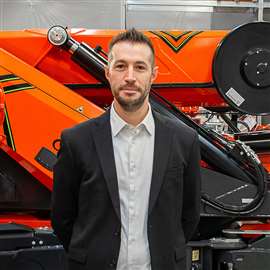 Mauro Tonon, Jekko operations director. Photo: Jekko
Mauro Tonon, Jekko operations director. Photo: Jekko
Three quarters of the workforce
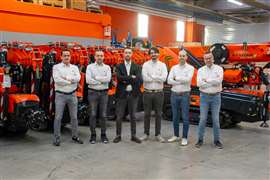 Jekko’s operations team, from left to right: Federico De Stefani, purchasing manager; Alessandro Cattai, planning manager; Mauro Tonon, operations director; Andrea Garoffolo, supply chain manager; Alan Rover, steel department plant manager; and Damiano Dal Cin, assembly deptartment plant manager. Photo: Jekko
Jekko’s operations team, from left to right: Federico De Stefani, purchasing manager; Alessandro Cattai, planning manager; Mauro Tonon, operations director; Andrea Garoffolo, supply chain manager; Alan Rover, steel department plant manager; and Damiano Dal Cin, assembly deptartment plant manager. Photo: Jekko
“Nowadays operations gathers five crucial activities for our corporate ecosystem: planning, purchasing, supply chain, production welding department, production assembly department.” Of the total 200 employees at Jekko 75 % of them are in operations. It has doubled in recent years due to a major change to the workflow. “The company migrated from work cell production to linear production, which greatly contributed to improve the overall efficiency and quality of the Jekko mini cranes.”
In more detail Tonon goes on to say, “We have standardised the manufacturing process, simplifying the operations following the principles of lean production and Six Sigma. In addition, we have also been working on establishing written guidelines and instructions for the different stages of assembly and testing to facilitate our co-workers in their daily tasks. This will also allow us to incorporate new personnel into the production lines more quickly and with a shorter training phase. In parallel to this, numerous intra-production controls and checklists have been implemented in co-operation with the Quality Office.”
Operations have also been expanded by extending the company’s headquarters from 10,000 to 30,000 square metres. Further expansion starts in 2024, with the addition of vertical storage warehousing.
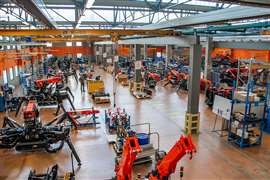 Jekko now runs a production line instead of cell-based manufacturing. Photo: Jekko
Jekko now runs a production line instead of cell-based manufacturing. Photo: Jekko
Volumes
Jekko is one of a small number of manufacturers worldwide of so-called mini cranes. It has three product lines: SPX mini cranes; JF articulated crawler cranes; and MPK mini pickers. Largest by turnover are the SPX mini cranes, accounting for 60 % of the total units manufactured. Next is the JF series.
“Single-door cranes, which means up to 3.2 tonnes maximum SWL [safe working load] make up our largest market; cranes with less than 9.5 tonnes capacity account for one quarter of our turnover,” Tonon explains.
“Our best-selling model is definitely the SPX532 mini crane, the largest option in the single-door range. We’ve had this crane in our catalogue for four years now. However, our expectations are for the SPX328 to draw ahead of SPX532,” Tonon continues.
Export majority
By far the largest proportion of Jekko’s production goes for export. Thanks to Italian government subsidies 2023 domestic market sales were up, to 18 % of the total, leaving 82 % exported.
“Europe is for us the main market, with Germany being the first country by number of sold units. North America follows [around 100 units] right after and we are now aiming to increase the market share in the Far East,” said Tonon.
Looking ahead, Tonon says, “Ongoing improvement towards operating excellence, sustainable growth and constant innovation: [mean] 2024 promises to be a crucial year for Jekko’s consolidation. The collaboration between the operations division and the quality control department is going to be increasingly closer by means of stricter controls during both product acceptance and the product outgoing phase. Our future target is to ensure that all products perfectly meet our company’s strict quality standards in every single detail.”
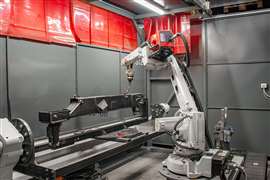 Jekko fabricates in house and uses robotised production. Photo: Jekko
Jekko fabricates in house and uses robotised production. Photo: Jekko
STAY CONNECTED


Receive the information you need when you need it through our world-leading magazines, newsletters and daily briefings.




